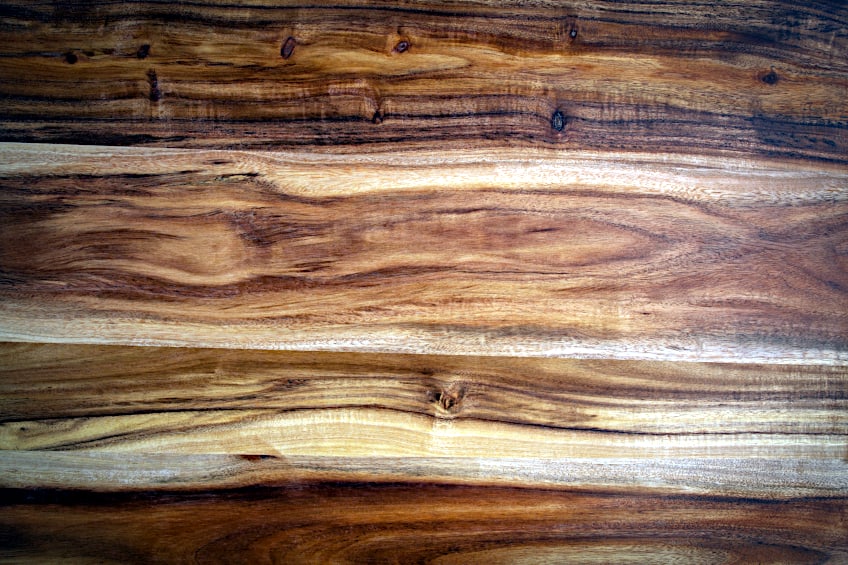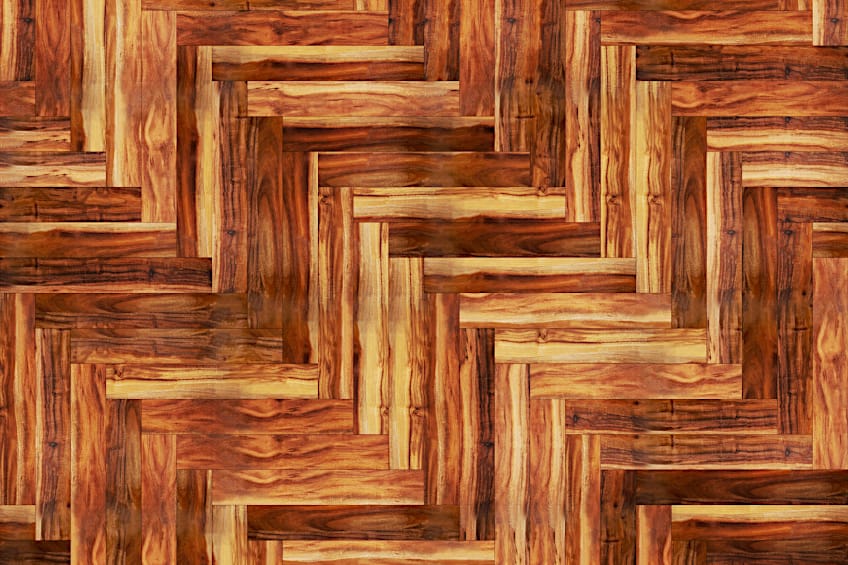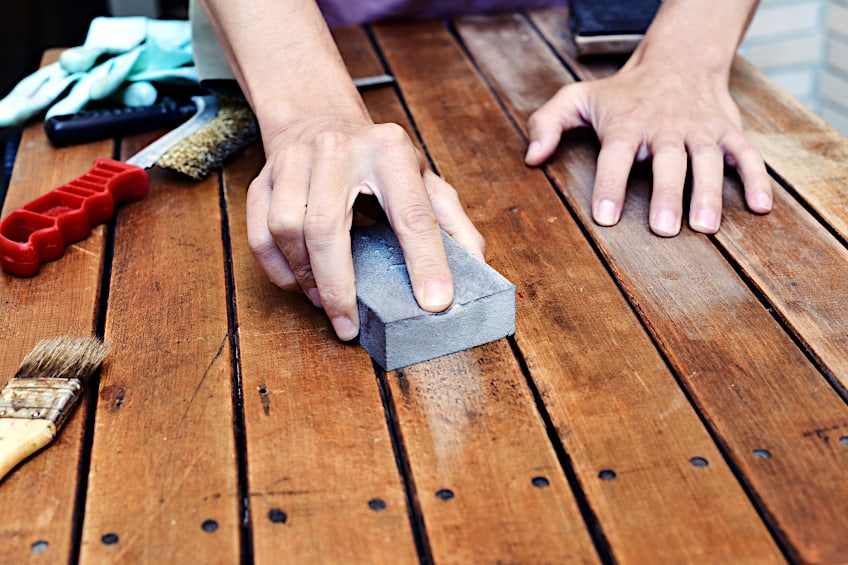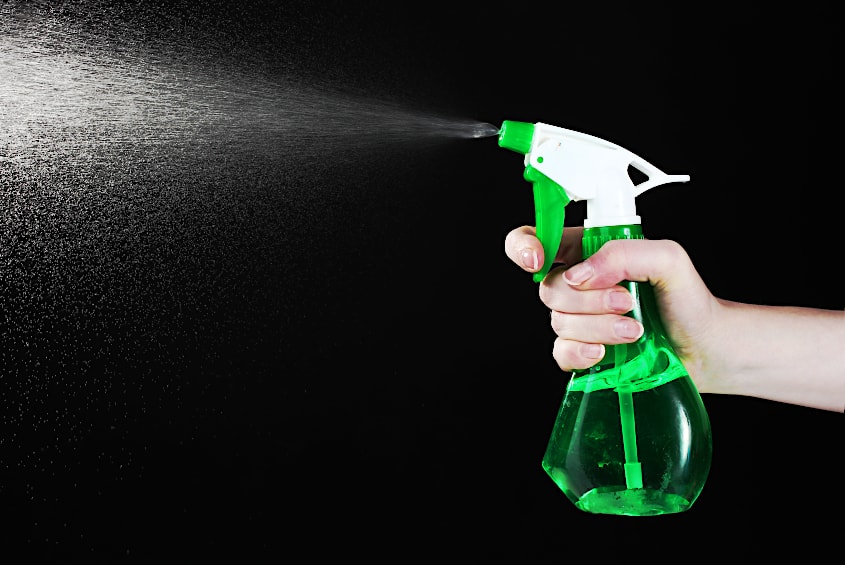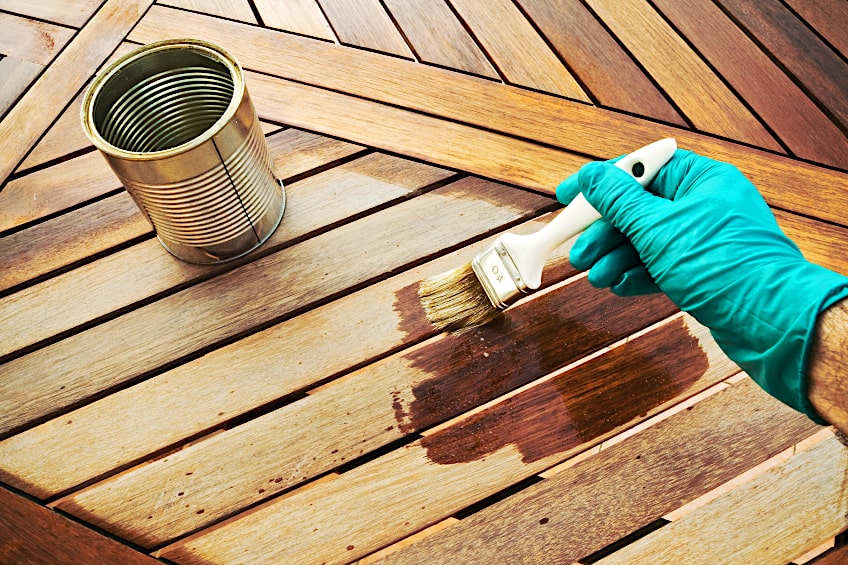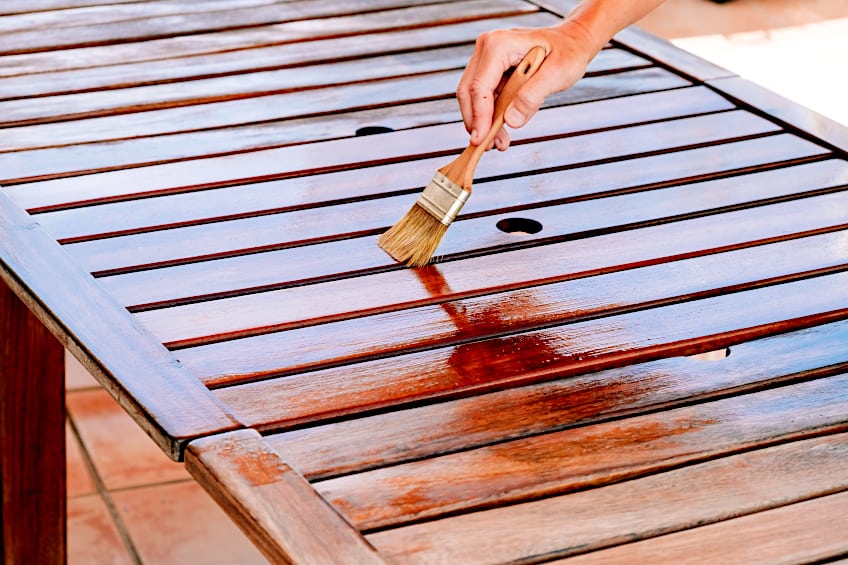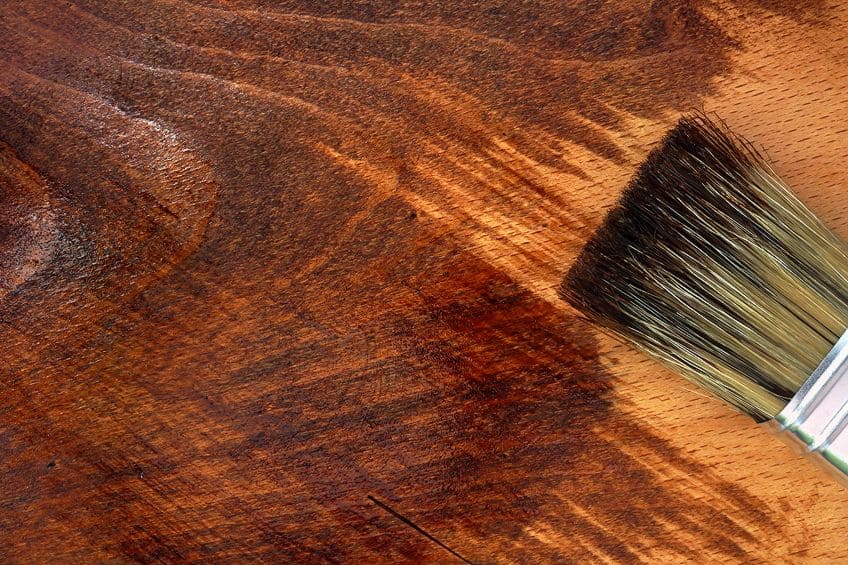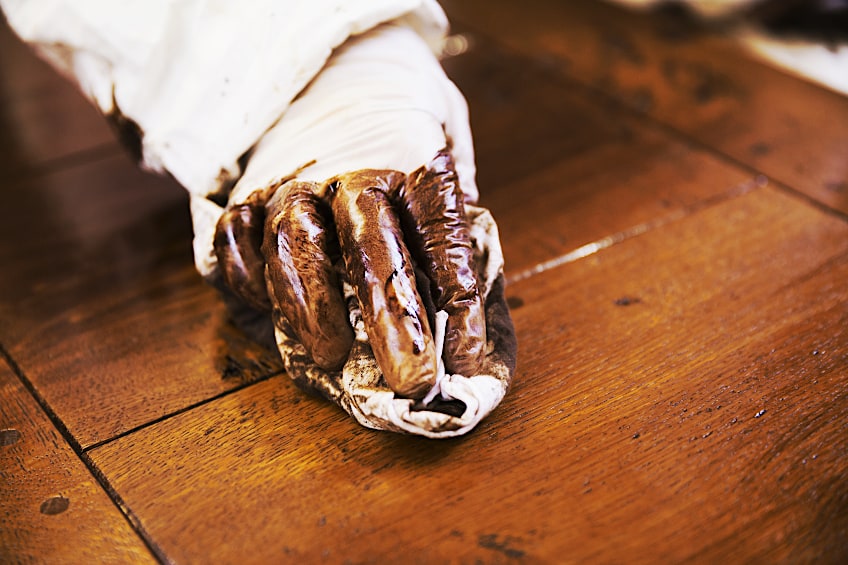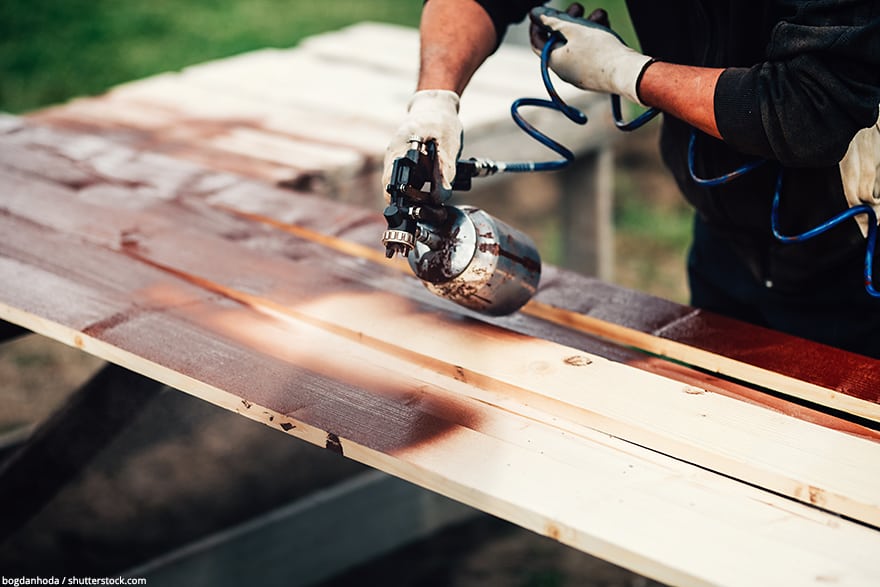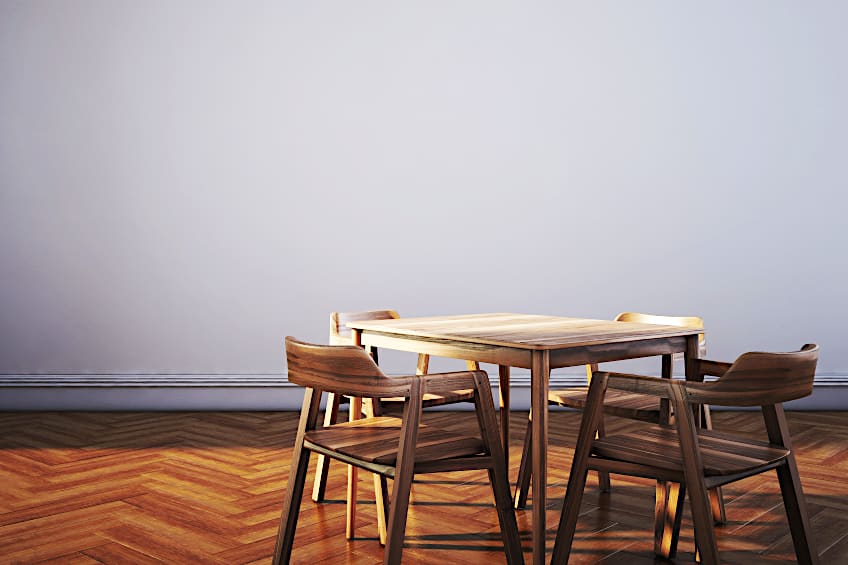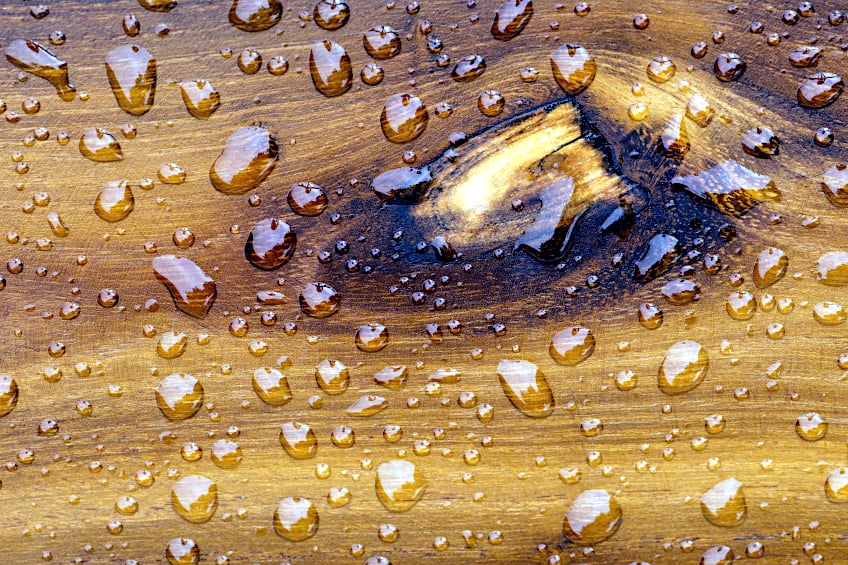How to Stain Acacia Wood – Easy Acacia Finishing Guide
This post may contain affiliate links. We may earn a small commission from purchases made through them, at no additional cost to you. You help to support resin-expert.com
If you are searching for a great species of wood for your following woodworking undertaking, then acacia is a great alternative to other wood species. The natural beauty of this species, paired with incredible resistance to decay and general wear, is what makes this one of the best hardwoods available today. Should you wish to change the shade of your wood project, we have you covered with all of the information you would need on how to stain acacia wood.
Table of Contents
Understanding Acacia Wood
As we have already mentioned, acacia is a hardwood; however, this is an umbrella term that is used to describe a large variety of species. While we will not be covering all of them here, there are a few of them that are primarily used for woodwork. Acacia is mainly found in Australia, but there are also different species located in Asia and Africa. The wood itself is incredibly durable and strong, which makes it perfect for furniture that sees plenty of use.
This is a wood that is also resistant to rot and termites which makes it excellent for building outdoor furniture.
Acacia wood color varies from one species to the next; however, it can be stained, in fact, if done correctly, learning how to stain acacia wood is a simple process if you take your time. Because it is such a hard and dense wood, it is not the best option for beginners as it is difficult to cut, sand, and drill into.
| Acacia Wood Species | Pros | Cons |
| Acacia Leiocalyx |
|
|
| Acacia Koa |
|
|
| Acacia Implexa |
|
|
| Acacia Homalophylla |
|
|
| Acacia Dealbata |
|
|
| Acacia Confusa |
|
|
| Acacia Cambagei |
|
|
| Acacia Baileyana |
|
|
| Acacia Auriculiformis |
|
|
| Acacia Acuminata |
|
|
The Advantages of Staining Acacia Wood
As you probably expected, there is a range of benefits that come with staining acacia wood. While expensive, the use of acacia wood has grown in popularity, mostly due to its durability and excellent quality. Staining wood has a variety of benefits such as color enhancement, increased durability, cheap protection, preservation of the wood grain, and enhanced aesthetics.
Apart from the natural benefits that come with staining this wood, the process is quite simple. However, as is the process with many other types of wood, the finished product will depend on the time that you have taken to prepare the surface.
Proper preparation will provide you with an excellent finish and this will preserve your project for a long time.
How to Stain Acacia Wood
As we have established, the key to achieving the best finish is to ensure that you have followed the steps to prepare the surface of the wood. This will not only ensure that the wood looks good, but that it feels good too. Here we have provided all of the steps needed to guarantee that your acacia wood project looks and feels great.
The materials that are needed are inexpensive and it is best to have all of them and not need them than the other way around.
Since acacia wood is extremely dense, you will need to spend a lot of time preparing the surface to ensure that the wood stain can seep into the grain of the wood. You will require the following tools and materials.
- Sandpaper
- Oil-based wood stain
- Lint-free cloths
- Sponges
- Gloves
Preparation for Staining
Staining acacia wood is generally a five-step process that involves cleaning, sanding, raising the wood grain, staining, and sealing. The entire process can be quite simple; however, great care must be taken to ensure that you end up with the best finish and a project that lasts a very long time. Take a closer look at the steps that we have provided below.
Sanding and Cleaning
With any wood staining project, the only way to begin is to sand the wood, and this applies to acacia wood projects too. Here you will use fine-grit sandpaper to remove any marks or scratches that can be found on the surface. Another reason for sanding is to allow the natural oils that are found in acacia wood to dissipate. This will allow the stain to seep into the wood.
Once you have completed the sanding process, ensure that you have given the surface of the wood a thorough wipe down. This will ensure that when you move on to the next step, your focus can be on the step itself, rather than wiping away dust particles in between the task at hand. In general, take the time to wipe down the project after each step.
Water Popping the Acacia Wood Grain
Water popping or raising the wood grain of acacia is a vital part of the preparation phase as this will give you the best chance to increase the amount of wood stain that can penetrate the fibers. What this does is enable the wood fibers to raise, which then makes it much easier for the stain to soak into the wood fibers. Another part of this phase is the wetting process. Start by wetting the surface of the acacia wood with a damp cloth. Do not soak the wood as this will leave streaks on the surface which will make it very difficult to apply the wood stain evenly. By allowing the wood to completely dry, give it 30 to 45 minutes before you begin the stain application.
By wetting the wood, you will allow moisture to breach the fibers which results in the wood cells shrinking. You should be left with a coarse surface that is the result of the fibers that have pulled to the surface. This will allow you to easily apply the wood stain as it is much easier for finishing tools to cut into the surface.
Applying the Wood Stain
Before you begin staining your acacia wood project, here are some important tips that will guarantee an even staining result. Always stain in layers, stain with the grain of the wood and not against it, and always use a clean sponge, brush, or dry cloth when applying the product. If you do this, you should have no trouble applying an even coat of wood stain.
Now, when you begin, it is best to apply the wood stain in small sections until you have completed the surface. By doing it in sections, you can be guaranteed that each segment has an even coat, which will then make it much easier for you as you will not have to play any guessing games with your application.
You should also apply your stain and then remove any excess with a soft cloth or an old rag. This will prevent any ugly staining or missed spots, which could ruin the final appearance of your project. By applying wood stain along the wood grain, you will ensure that an adequate amount of dye is soaked into the wood. The entire process can be repeated as needed until you have reached the desired color.
It should be noted that you should allow the first coat of wood stain to completely air dry before attempting to apply another. It should take a minimum of 20 minutes for each coat to dry, but it is okay to wait a bit longer if you are unsure of whether it has completely dried. Once you have applied the desired number of coats, you can move on to the next step.
The Second Phase of Sanding
As you have likely expected, you will need to complete another round of light sanding after you have applied the wood stain. This needs to be done as you have to roughen the surface to get the wood stain to stick. With fine-grit sandpaper, keep sanding until you have achieved the smoothness that you would like.
By doing this, you are guaranteeing that the stain is able to penetrate deep into the wood fibers which will result in a much more polished appearance. Always remember to sand with the grain and there are no restrictions on the type of sandpaper that can be used, it all comes down to personal preference.
Finishing the Wood Surface
To ensure that your acacia wood surface is durable and that it is protected, you will need to apply a finish to the stained project. This can be done with a lacquer or a finishing oil and the type of finish that you choose comes down to preference. However, certain finishes do yield particular benefits. For instance, if you choose an oil-based finish, you will have increased protection against moisture. But these types of finishes tend to take a long time to dry, which is not ideal if you are working with a tight deadline.
If you choose to use lacquer, this can be done quickly, but it does not last as long as oil-based finishes. This means that you will regularly need to reapply the finish.
Various Staining Techniques
There are a broad range of techniques that can be used when applying stain to acacia wood. This will make it very easy when it comes to applying wood stain on various surfaces, including those that feature intricate designs and curves. Each technique has different advantages and disadvantages, so take a look at each one before applying wood stain.
Brush Method
The brush method is one of the classic methods when it comes to applying paint or wood stain to any surface. However, it is the best option when it comes to applying wood stain to difficult-to-reach areas. While this is a common way of applying wood stain to different acacia wood projects, it does have a series of disadvantages. This includes leaving brush strokes, which can affect the finish, and brushes are usually a pain to clean, especially when you have used oil-based products.
Rag Method
The rag method or simply wiping is an incredibly quick method of applying wood stain. While it is very difficult to use a cloth to get into a tight area and the process can be very messy, these are the only disadvantages of using the rag method. With wiping, you can easily apply layered coats of wood stain without having much excess on the surface. When using this method, you should have a sponge handy to get into those tight crevices.
Spraying Method
If you have the means to do it, the spraying method is extremely effective for applying wood stain. Additionally, if you are hoping to achieve a glass-like finish, then this is the best way to do it. Spraying is quick and easy once you have the proper technique and if you are using a disposable can, then you will eliminate the need to clean up.
What Should You Use?
When it comes to applying wood stain on your acacia wood project, what you choose comes down to preference. However, if we had to choose an option for you, it would be the rag method. This comes down to how easy it is to use, despite being limited to flat and curved surfaces. With the rag, you would need a sponge to reach those tight areas.
Maintenance and Care
Now that you have applied your wood stain, you will need to ensure that you are able to maintain the beautiful finish that you have worked so hard for. Furthermore, we have also provided more information regarding the staining process and how you can produce a long-lasting wood finish.
Proper Maintenance
Acacia wood is very easy to maintain; however, you will need to keep the wood out of direct sunlight as this will cause the color to fade over time. Additionally, do not expose the wood to water, as it may be water-resistant; however, this can result in water marks, which will ruin the natural beauty of the wood.
Tips for Long-Lasting Results
Since acacia wood absorbs wood stain very well if you have followed the correct methods, you will be able to apply a few coats of wood stain and not need to worry about it too much. Due to the density of the wood, you will need to ensure that you follow the steps that we have provided to the letter, as this will make the difference between a good finish and a mediocre one.
How to Maintain and Clean Stained Acacia Wood
Cleaning and maintaining acacia wood will prevent the dreaded, “how to refinish acacia wood”, Google search. This is a wood that can easily be cleaned with warm water and a mild natural soaps. This also prevents cracking and drying as it will maintain the natural shine of the wood. Using common household detergents is not recommended as these contain ammonia or silicone, which can dry out and break down the outer layer of the wood.
Acacia wood is often regarded as one of the most long-lasting hardwoods around, which makes it ideal for flooring or outdoor furnishings. However, staining it can be a lengthy process that takes a lot of time and energy. By following the steps that we have provided, we can assure you that you will have a finished product that is not only beautiful, but also has a long-lasting finish. We wish you the best of luck with your subsequent woodworking projects now that you know how to stain acacia wood!
Frequently Asked Questions
What Is the Best Method of Preserving Acacia Wood Color?
To ensure that your acacia wood project maintains its rich color, you need to keep it out of direct sunlight. This is because sunlight will cause discoloration, which will require a lot of work to refinish.
What Color Is Acacia Wood Generally Found In?
What color is acacia wood? Since there are many different species of acacia, the colors range from dark red to light brown. So, if you are wondering about the color, it all comes down to what species of acacia wood you are referring to. Keep in mind though, that a main feature of Acacia wood is its multi-colored grain patterns.
Is It Easy to Learn How to Refinish Acacia Wood?
Yes, it is; however, you will have a long day ahead of you as it is a huge task that requires a lot of sanding. Once you have sanded the wood, everything else comes down to patience, as there is a lot of oil drying to be done.


